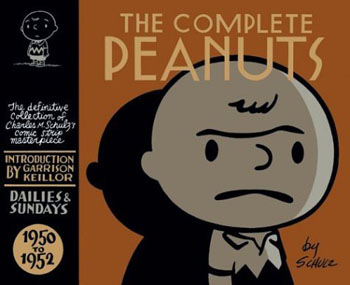Personal History

Wundervolles Essay von Jonathan Franzen im New Yorker: ĂĽber Charles M. Schulz, die Peanuts, die Menschlichkeit von Snoopy und was das alles mit seiner eigenen Familie zu tun hat. The Comfort Zone: Growing up with Charlie Brown.
“Everything I do makes me feel guilty,” says Charlie Brown. He’s at the beach, and he has just thrown a pebble into the water, and Linus has commented, “Nice going. . . . It took that stone four thousand years to get to shore, and now you’ve thrown it back.”
I felt guilty about Toczko. I felt guilty about the little frog. I felt guilty about shunning my mother’s hugs when she seemed to need them most. I felt guilty about the washcloths at the bottom of the stack in the linen closet, the older, thinner washcloths that we seldom used. I felt guilty for preferring my best shooter marbles, a solid-red agate and a solid-yellow agate, my king and my queen, to marbles farther down my rigid marble hierarchy. I felt guilty about the board games that I didn’t like to play – Uncle Wiggily, U.S. Presidential Elections, Game of the States – and sometimes, when my friends weren’t around, I opened the boxes and examined the pieces in the hope of making the games feel less forgotten. I felt guilty about neglecting the stiff-limbed, scratchy-pelted Mr. Bear, who had no voice and didn’t mix well with my other stuffed animals. To avoid feeling guilty about them, too, I slept with one of them per night, according to a strict weekly schedule.
We laugh at dachshunds for humping our legs, but our own species is even more self-centered in its imaginings. There’s no object so Other that it can’t be anthropomorphized and shanghaied into conversation with us. Some objects are more amenable than others, however. The trouble with Mr. Bear was that he was more realistically bearlike than the other animals. He had a distinct, stern, feral persona; unlike our faceless washcloths, he was assertively Other. It was no wonder I couldn’t speak through him. An old shoe is easier to invest with comic personality than is, say, a photograph of Cary Grant. The blanker the slate, the more easily we can fill it with our own image.
Our visual cortexes are wired to quickly recognize faces and then quickly subtract massive amounts of detail from them, zeroing in on their essential message: Is this person happy? Angry? Fearful? Individual faces may vary greatly, but a smirk on one is a lot like a smirk on another. Smirks are conceptual, not pictorial. Our brains are like cartoonists – and cartoonists are like our brains, simplifying and exaggerating, subordinating facial detail to abstract comic concepts.
Scott McCloud, in his cartoon treatise Understanding Comics, argues that the image you have of yourself when you’re conversing is very different from your image of the person you’re conversing with. Your interlocutor may produce universal smiles and universal frowns, and they may help you to identify with him emotionally, but he also has a particular nose and particular skin and particular hair that continually remind you that he’s an Other. The image you have of your own face, by contrast, is highly cartoonish. When you feel yourself smile, you imagine a cartoon of smiling, not the complete skin-and-nose-and-hair package. It’s precisely the simplicity and universality of cartoon faces, the absence of Otherly particulars, that invite us to love them as we love ourselves. The most widely loved (and profitable) faces in the modern world tend to be exceptionally basic and abstract cartoons: Mickey Mouse, the Simpsons, Tintin, and, simplest of all – barely more than a circle, two dots, and a horizontal line – Charlie Brown.
Im Artikel wird eine neue Ausgabe der Werke von Charles M. Schulz erwähnt. Fantagraphics veröffentlichen nach und nach das Gesamtwerk. Bis jetzt sind die Jahre 1950–54 erschienen.